Grazing a path to safety: Laguna Beach fights fire with goats
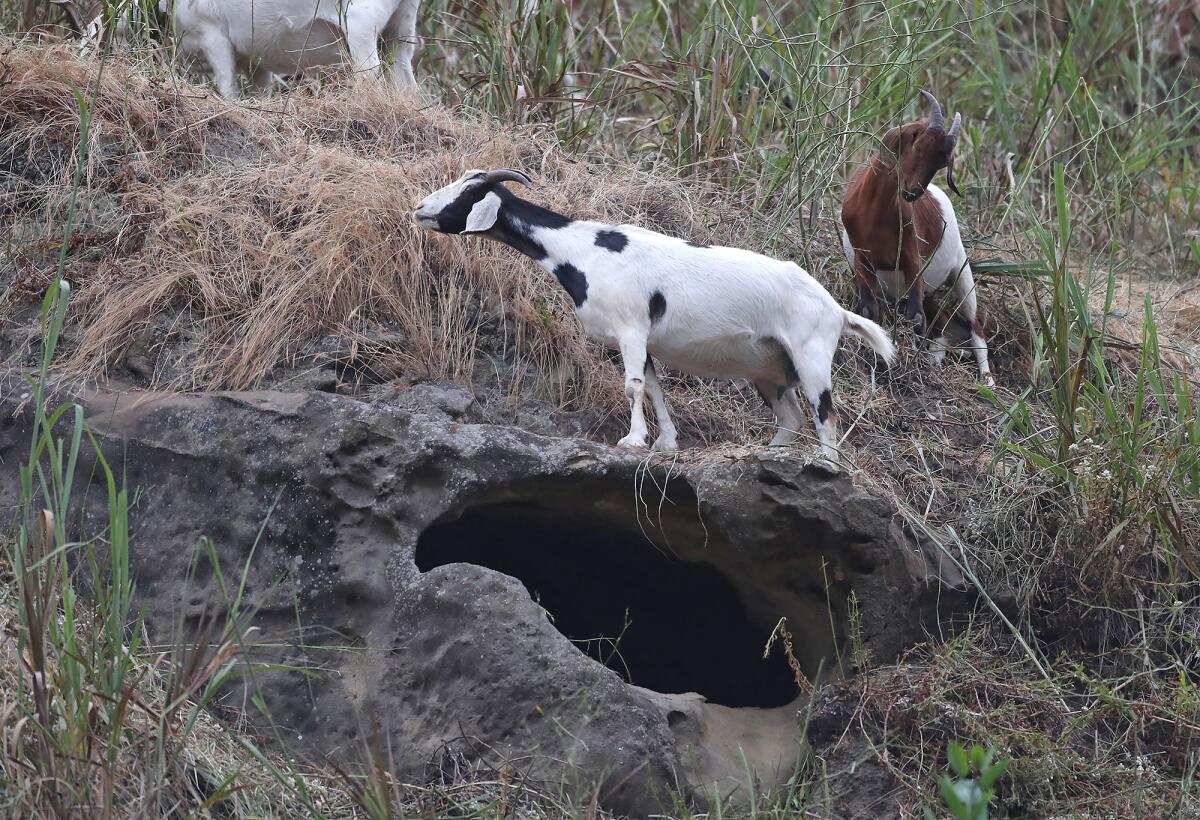
- Share via
Laguna Beach residents and visitors alike have spotted dozens of goats near the village entrance over the past month, a welcomed sight, albeit a fleeting one.
Even during this period of extended visibility, the herd has progressed deeper into the canyon, navigating steep hills most people wouldn’t dare to climb — nor should they.
The goats have a job to do, after all, a most important one to all that want to preserve the little piece of paradise that is Laguna Beach. The town’s goat grazing program has been in place for nearly three decades, one of several mitigation efforts in place against the threat of wildfire.
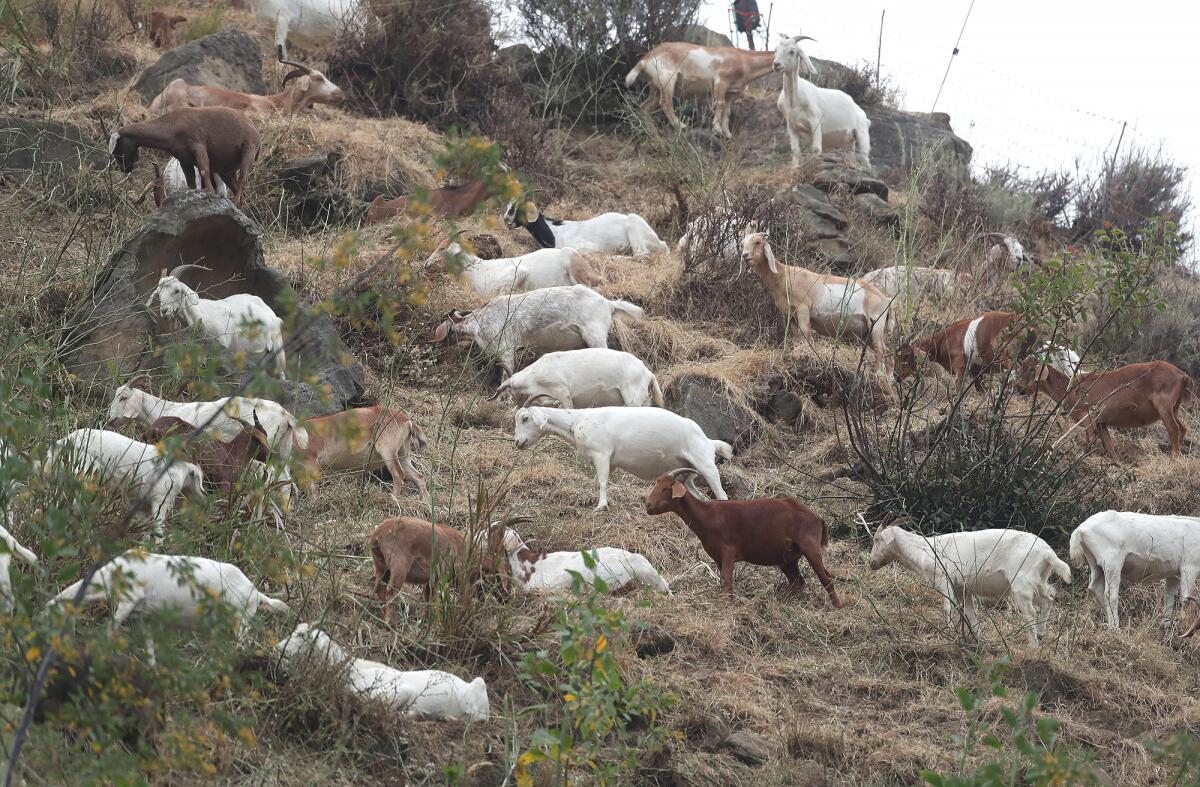
“It’s a great program,” Fire Marshal Robert Montaghami said. “I recommend it to any community that has the topography challenges. It’s a very cost-effective way of reducing the fuel and the hazard out there in our community. We are protecting our community, essentially. I recommend that. There are limitations, of course, and you have to manage it very well, but once you get into a routine of this program, it really is very beneficial.”
Timing matters in this operation. Local fire officials have increasingly favored the term “fire year” over that of “fire season,” although the city still attempts to complete its goat grazing program between the rainy season and October, Montaghami said.
Longtime residents remember the October 1993 fire as a major blaze that burned more than 400 homes and 16,000 acres. In fact, the disaster is still taught in schools. Laguna Beach High freshmen presented projects that had them research the fire, both through written accounts and interviews, to school staff, fire officials, and local media in February.
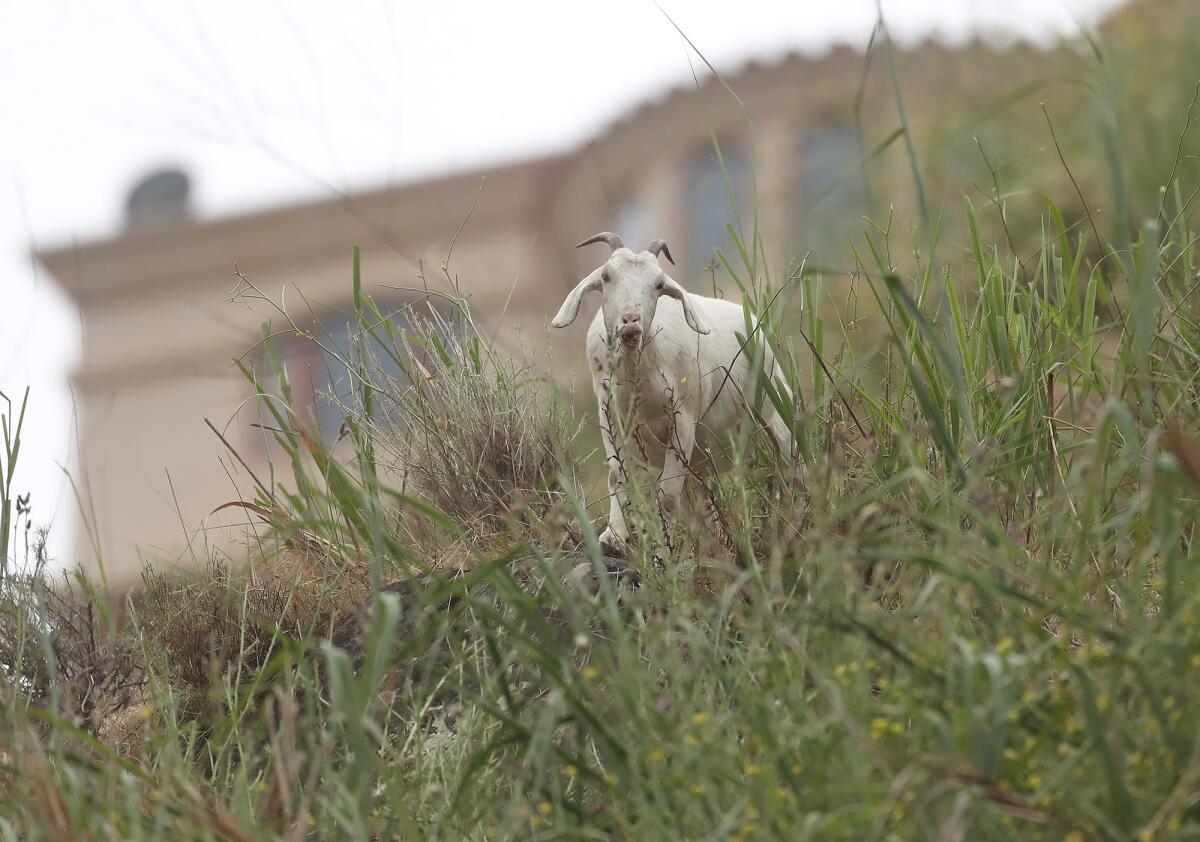
History has informed the fire safety measures taken by Laguna Beach. The goat grazing program became a staple of the community’s mitigation efforts under former City Manager Ken Frank.
“We learn lessons throughout history with every fire, and we try to change our methods of prevention, and safety mechanisms, according to the lessons that we learn,” Montaghami said. “I think the community of Laguna Beach and the safety that we have provided since 1993 is evidence of the lessons that we have learned and the investment the city has made into these preventive programs.”
Councilman Bob Whalen penned a letter to the community when the 30th anniversary of the 1993 fire came up last year, during his most recent mayoral term.
“The number of goats we utilize fluctuates depending on the amount of growth we have off the rainy season,” Whalen said. “This year, I know we have two herds of goats working, and there are 200 goats in a herd, so we’ve got 400 goats out there eating their fill.”
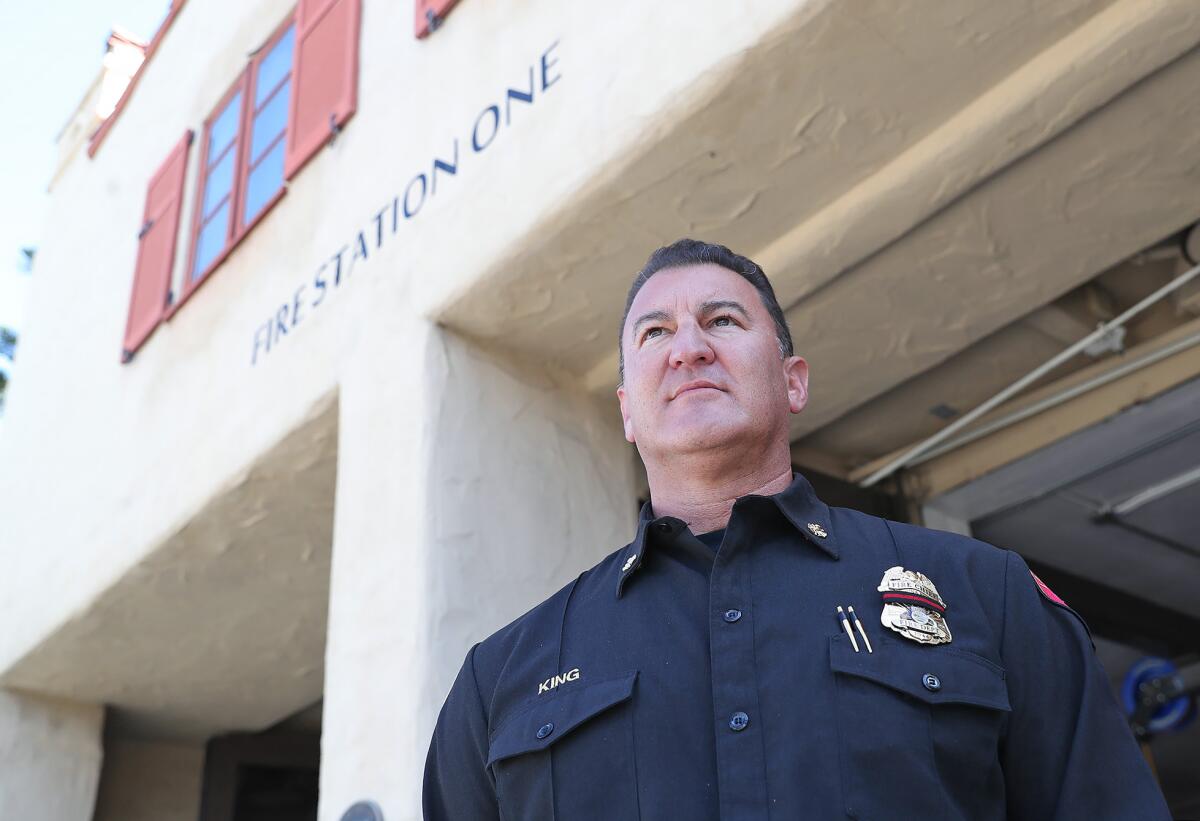
Wildfire mitigation requires a collective effort. In addition to fuel modification, Fire Chief Niko King said he regards home hardening as a major factor in saving structures. Roofing, vegetation surrounding the home and nonflammable patio furniture can make a difference, King said.
“It’s been known and seen in the last major fires that we’ve had in the state of California that the homes are catching on fire not by direct flame contact, but by the ember cast that comes from the fire,” King added. “It’s the wind. Those small embers get caught on flammable roofs, they get caught into the attic spaces. The vents, … if they’re three-eighths [of an inch] or less, it prevents those embers from getting into those confined spaces in the homes.”
The wildfire mitigation and fire safety plan, a $23-million commitment by the City Council in 2019, introduced more than 40 recommendations. Notable developments from this have included the installation of two helicopter water refilling stations, which were put to use in fighting the Aliso fire in May 2022.
Multiple neighborhoods have also opted in to undergrounding utility lines, including a 380-parcel district for Woods Cove in December.
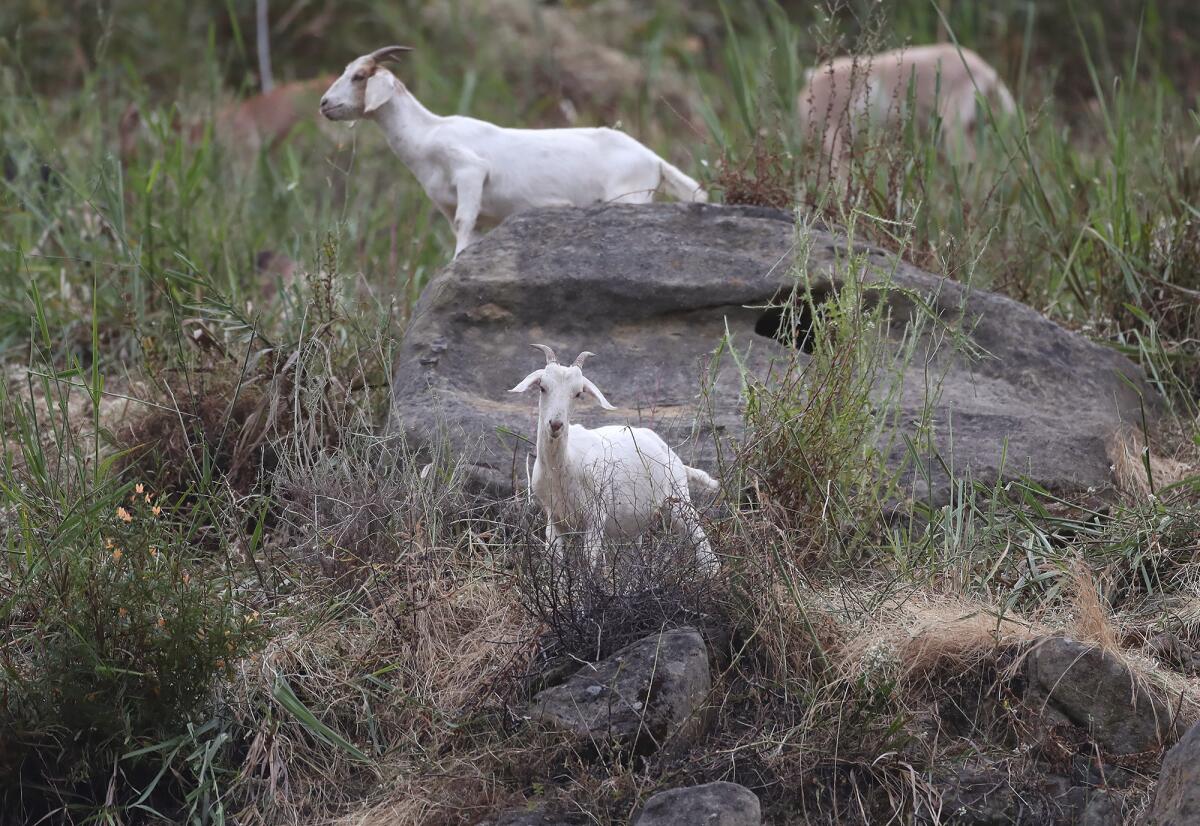
Laguna Beach has various programs working in concert to protect the community from wildfire, Montaghami added. The goats chew away indiscriminately at 10 fuel modification zones, or areas where properties interface with open space. Fuel modification aims to clear a 100-foot buffer from structures. The total acreage assigned to the goat grazing program amounts to approximately 280 acres.
Dave Kiff, who was brought on as Laguna Beach city manager in May, said the annual cost for the goat grazing program amounts to $183,000, or one pass at $650 per acre.
In addition, hand crews manage 17 zones, with much of the land they work on containing protected vegetation and wildlife. Beyond that, the city has a weed abatement program. Fire officials are also available to conduct inspections.
The hand crews cost $1.3 million annually and make three passes at $12,600 per acre, Kiff added.
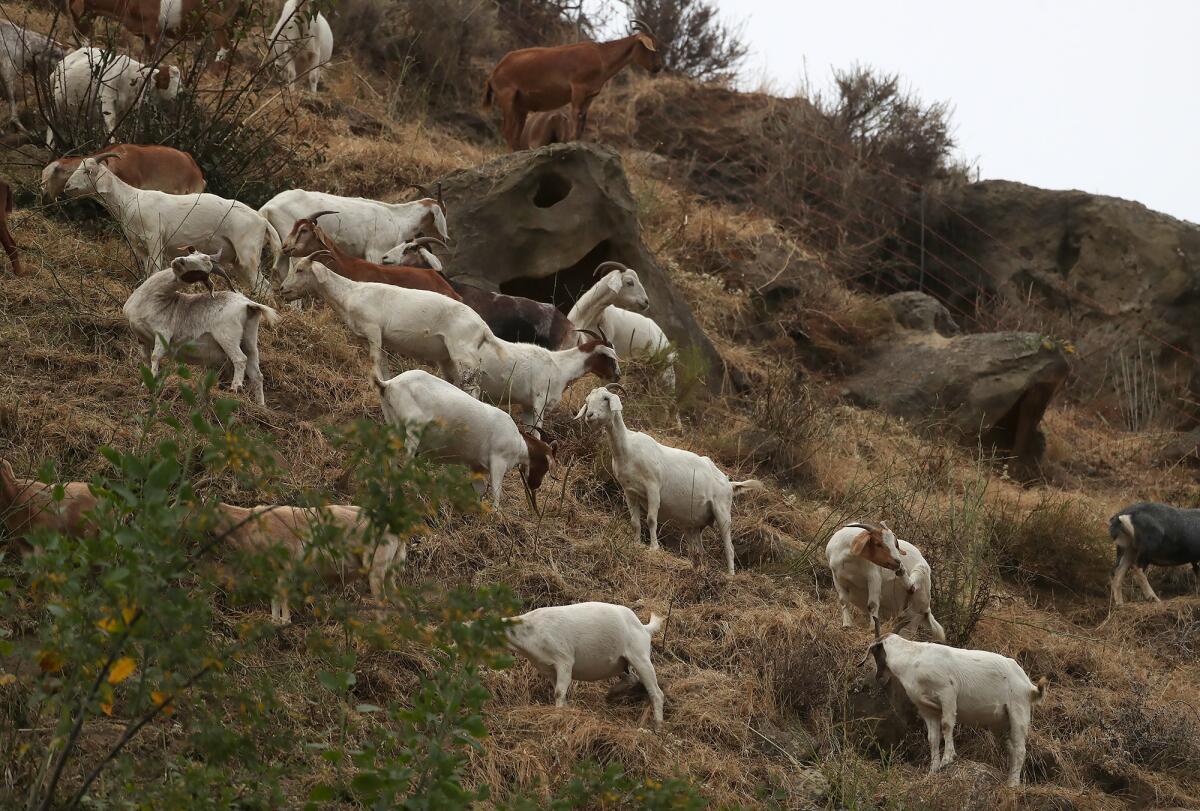
“It’s not necessarily something that’s going to stop a fire, but it’s going to take the energy out of the fire, and it gives the best opportunity for firefighters to go put themselves in a position to protect the property,” King said of the fuel modification program providing for defensible space.
Kiff said he has an open ear to the ideas of those in the fire service. The 1993 fire was fresh in the minds of many when Kiff moved to the Upper Victoria neighborhood for his first stint in town in 1996.
“It just reinforced the importance of planning,” Kiff said. “It’s the most advanced protection that you can have before a wildfire occurs, and you know it’s going to occur again, so how can we best protect the community from that.”

The goats have a place in Laguna Beach pop culture. Lagunatics, an annual production of No Square Theatre that turns even the most heated debates into laughing matters, has staged skits dedicated to the munchers.
Whalen noted that third-graders always ask about the goats during their field trip to City Hall.
“It’s definitely a curiosity for people,” Whalen said. “The goats are a big part of our community. It’s been almost three decades.”
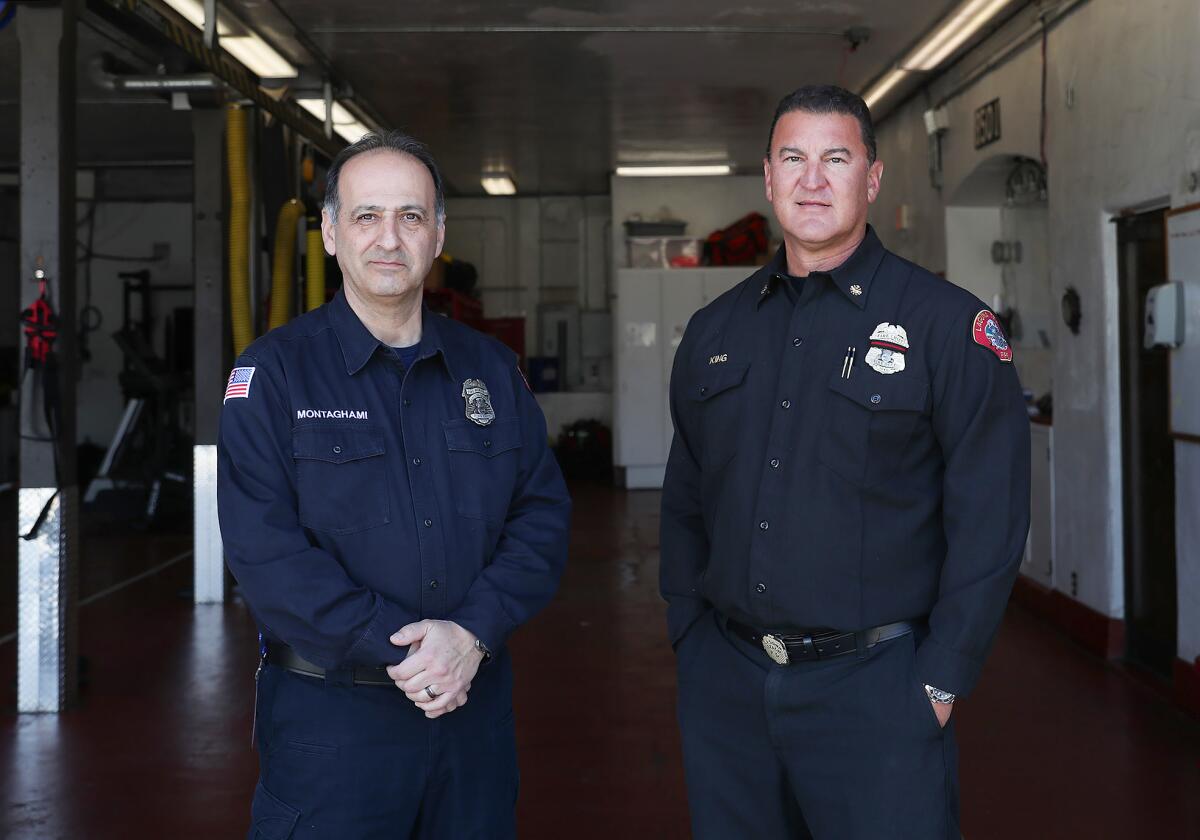
All the latest on Orange County from Orange County.
Get our free TimesOC newsletter.
You may occasionally receive promotional content from the Daily Pilot.




